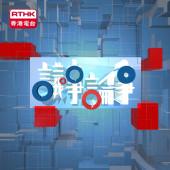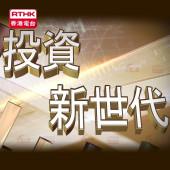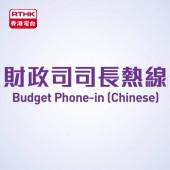 Loading ...
Loading ...Bernard Chan, Convenor of the Executive Council
2021-02-28
返回
Bernard Chan, Convenor of the Executive Council
2021-02-28
Good morning Hong Kong!
Do you know where your trash goes?
This is a question I enjoyed asking friends and colleagues during the time when I was chairman of the Sustainable Development Council and working on the issue of municipal solid waste in Hong Kong.
I was not surprised to find that most people have no idea.
An early morning visit to a refuse collection point in Hong Kong can be a real eye opener. Some of the trash collectors carefully separate the recyclables from the trash as they should. But you may also see others cherry-picking the trash for the more valuable items like cardboard, which can be recycled for money, and dumping the other recyclables with the rest of the trash. There are no clear standards for the disposal of these items that so many of us put time and effort into carefully sorting at home.
It’s all too easy to stick our heads in the sand when it comes to the waste we produce. But we are more than a decade late in confronting this critical issue in Hong Kong, where the amount of municipal solid waste has outstripped population growth by 36% over the last thirty years. In 2018, the average Hong Konger generated 1.53 kilos of waste--daily. That’s more than a half tonne of waste a year per person!
It’s not an exaggeration to say that we’re facing a waste crisis in Hong Kong. Our three existing landfills are going to be filled up, one by one, in the coming few years.
Earlier this month, the government and the Environment Bureau announced the Waste Blueprint for Hong Kong 2035. It’s called "Waste Reduction‧Resources Circulation‧Zero Landfill". I highly recommend taking a look at the paper, which is available online at www.enb.gov.hk. It details Hong Kong’s long term plan to get our waste down to zero by 2035.
The blueprint sets a medium term per capita waste reduction target of 40-45%, with a recovery/recycling increase of 55%
How do we hit these targets? Well, one of the key measures recommended in the blueprint is something we have been advocating since 2014--the Municipal Solid Waste Charging scheme.
The scheme was always going to be a hard sell in Hong Kong, but it is particularly so in this time of COVID and economic crisis. Like anything that costs people money, there will be resistance from vested interests.
I worry that political and economic considerations will keep it from passing during this Legislative Council session. I hope that doesn’t happen. This is an acute problem. The future sustainability of Hong Kong is on the line.
What is the municipal solid waste charging scheme? It’s a version of the “pay-as-you-throw” concept that’s successfully reduced municipal solid waste in cities around the world.
In Hong Kong, the way it would work is that there would be a levy of around 11 cents a litre for household trash, and a per-pound levy for larger items. Designated garbage disposal bags would be sold in places like grocery and convenience stores, and there would be various incentives offered to offset these fees through recycling--and fines in place to discourage non-compliance.
We know that pay-as-you-throw schemes work very well. In Seoul, where charging has been in place since 1995, the recycling rate increased to 66%, and their food waste is now 95% recycled. San Francisco diverts an amazing 80% of its household waste away from landfills. (By contrast, New York City, which does not use pay-as-you-throw, recycles only 18% of its household trash.)
In most cities where it has been rolled out, the cost levied on trash is far higher than anything currently proposed for Hong Kong. San Francisco residents, for example, end up paying around $40 USD per month on average.
But the point of having a trash fee in Hong Kong isn’t to make money. Rather, it’s a mechanism, similar to the 50 cent plastic bag levy, to make people more mindful of how and what they throw away.
Sadly, even in this moment of growing awareness of pollution and global warming, many people simply aren’t looking seriously at the connection between their everyday consumption and environmental issues.
This is where our district councils, rural committees and green groups can help. The pay as you throw schemes need to be backed up with community involvement and education.
Studies have found that the success of recycling programs depends on involvement from citizens, community groups, and businesses. You can’t depend on the government alone. That’s why I was excited to learn about an independent initiative that was launched last December, Drink Without Waste.
Plastic bottles are a big waste problem, as anyone who hikes or goes to a beach in Hong Kong knows very well. And most of this plastic waste is unnecessary.
The Drink Without Waste group has gathered together various stakeholders, from beverage manufacturers, to the HK government, to community green organizations. The scheme’s goal is to reduce drink packaging waste in the city by paying citizens HK$0.05 per bottle or carton they recycle.
They have some unique ideas--the most interesting one is that they want to mobilize the people who already work informally in the bottle recycling economy as collectors.
They aim to recover 70 per cent to 90 percent of used beverage packaging by 2025.
I’m encouraged when I see initiatives like this. We can’t sit back and rely on the government alone. The waste problem is something we all need to be working on together. Right now, Hong Kong’s percentage of recycled household waste is around 30%--that’s better than New York’s but far below where we need to be.
And the unfortunate reality is this: Even by stepping up recycling and lowering our household waste, we’re still going to need to find more landfill space, and build more incinerators.
The one we are finally building at Shek Kwu Chau, after years of pushback from environmental groups, is only going to take care of 30% of Hong Kong’s needs. (Tokyo, by contrast, incinerates 70% of its waste).
But we can make a start by changing our behavior. By sorting our trash at the source, we’ll make it easier to recycle waste, thereby recovering resources to put into the sustainable “circular economy.” By producing less waste, we’ll have less waste that needs to go into landfills and incinerators.
The solutions, like the problem, are multi-pronged. Getting the municipal solid waste charging scheme approved by the Legislative Council this year is an essential first step. And the government’s new Waste Blueprint for Hong Kong, with its goal of Zero Landfill by 2035, charts a reasonable and sustainable way forward.
I hope that everyone listening today can take some time to read it, to learn more about waste reduction in Hong Kong, and what the government is doing, and plans to do, to facilitate recycling and reduction of waste in our communities. I encourage all of you to become more aware of what you use, and what you throw away, and begin thinking about ways you can help cut your own family’s waste footprint. Waste reduction is a shared responsibility. The sustainable future of Hong Kong depends on all of us.
Do you know where your trash goes?
This is a question I enjoyed asking friends and colleagues during the time when I was chairman of the Sustainable Development Council and working on the issue of municipal solid waste in Hong Kong.
I was not surprised to find that most people have no idea.
An early morning visit to a refuse collection point in Hong Kong can be a real eye opener. Some of the trash collectors carefully separate the recyclables from the trash as they should. But you may also see others cherry-picking the trash for the more valuable items like cardboard, which can be recycled for money, and dumping the other recyclables with the rest of the trash. There are no clear standards for the disposal of these items that so many of us put time and effort into carefully sorting at home.
It’s all too easy to stick our heads in the sand when it comes to the waste we produce. But we are more than a decade late in confronting this critical issue in Hong Kong, where the amount of municipal solid waste has outstripped population growth by 36% over the last thirty years. In 2018, the average Hong Konger generated 1.53 kilos of waste--daily. That’s more than a half tonne of waste a year per person!
It’s not an exaggeration to say that we’re facing a waste crisis in Hong Kong. Our three existing landfills are going to be filled up, one by one, in the coming few years.
Earlier this month, the government and the Environment Bureau announced the Waste Blueprint for Hong Kong 2035. It’s called "Waste Reduction‧Resources Circulation‧Zero Landfill". I highly recommend taking a look at the paper, which is available online at www.enb.gov.hk. It details Hong Kong’s long term plan to get our waste down to zero by 2035.
The blueprint sets a medium term per capita waste reduction target of 40-45%, with a recovery/recycling increase of 55%
How do we hit these targets? Well, one of the key measures recommended in the blueprint is something we have been advocating since 2014--the Municipal Solid Waste Charging scheme.
The scheme was always going to be a hard sell in Hong Kong, but it is particularly so in this time of COVID and economic crisis. Like anything that costs people money, there will be resistance from vested interests.
I worry that political and economic considerations will keep it from passing during this Legislative Council session. I hope that doesn’t happen. This is an acute problem. The future sustainability of Hong Kong is on the line.
What is the municipal solid waste charging scheme? It’s a version of the “pay-as-you-throw” concept that’s successfully reduced municipal solid waste in cities around the world.
In Hong Kong, the way it would work is that there would be a levy of around 11 cents a litre for household trash, and a per-pound levy for larger items. Designated garbage disposal bags would be sold in places like grocery and convenience stores, and there would be various incentives offered to offset these fees through recycling--and fines in place to discourage non-compliance.
We know that pay-as-you-throw schemes work very well. In Seoul, where charging has been in place since 1995, the recycling rate increased to 66%, and their food waste is now 95% recycled. San Francisco diverts an amazing 80% of its household waste away from landfills. (By contrast, New York City, which does not use pay-as-you-throw, recycles only 18% of its household trash.)
In most cities where it has been rolled out, the cost levied on trash is far higher than anything currently proposed for Hong Kong. San Francisco residents, for example, end up paying around $40 USD per month on average.
But the point of having a trash fee in Hong Kong isn’t to make money. Rather, it’s a mechanism, similar to the 50 cent plastic bag levy, to make people more mindful of how and what they throw away.
Sadly, even in this moment of growing awareness of pollution and global warming, many people simply aren’t looking seriously at the connection between their everyday consumption and environmental issues.
This is where our district councils, rural committees and green groups can help. The pay as you throw schemes need to be backed up with community involvement and education.
Studies have found that the success of recycling programs depends on involvement from citizens, community groups, and businesses. You can’t depend on the government alone. That’s why I was excited to learn about an independent initiative that was launched last December, Drink Without Waste.
Plastic bottles are a big waste problem, as anyone who hikes or goes to a beach in Hong Kong knows very well. And most of this plastic waste is unnecessary.
The Drink Without Waste group has gathered together various stakeholders, from beverage manufacturers, to the HK government, to community green organizations. The scheme’s goal is to reduce drink packaging waste in the city by paying citizens HK$0.05 per bottle or carton they recycle.
They have some unique ideas--the most interesting one is that they want to mobilize the people who already work informally in the bottle recycling economy as collectors.
They aim to recover 70 per cent to 90 percent of used beverage packaging by 2025.
I’m encouraged when I see initiatives like this. We can’t sit back and rely on the government alone. The waste problem is something we all need to be working on together. Right now, Hong Kong’s percentage of recycled household waste is around 30%--that’s better than New York’s but far below where we need to be.
And the unfortunate reality is this: Even by stepping up recycling and lowering our household waste, we’re still going to need to find more landfill space, and build more incinerators.
The one we are finally building at Shek Kwu Chau, after years of pushback from environmental groups, is only going to take care of 30% of Hong Kong’s needs. (Tokyo, by contrast, incinerates 70% of its waste).
But we can make a start by changing our behavior. By sorting our trash at the source, we’ll make it easier to recycle waste, thereby recovering resources to put into the sustainable “circular economy.” By producing less waste, we’ll have less waste that needs to go into landfills and incinerators.
The solutions, like the problem, are multi-pronged. Getting the municipal solid waste charging scheme approved by the Legislative Council this year is an essential first step. And the government’s new Waste Blueprint for Hong Kong, with its goal of Zero Landfill by 2035, charts a reasonable and sustainable way forward.
I hope that everyone listening today can take some time to read it, to learn more about waste reduction in Hong Kong, and what the government is doing, and plans to do, to facilitate recycling and reduction of waste in our communities. I encourage all of you to become more aware of what you use, and what you throw away, and begin thinking about ways you can help cut your own family’s waste footprint. Waste reduction is a shared responsibility. The sustainable future of Hong Kong depends on all of us.
Politicians and public figures from a range of backgrounds take turns to have their say on important matters of the day in this personal view programme.
Catch it live: Sunday 8:15am - 8:25am
Podcast: Updated weekly and available after broadcast.











